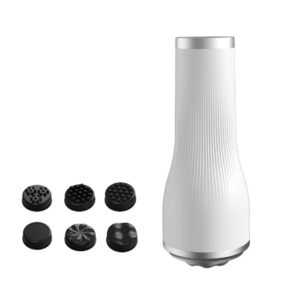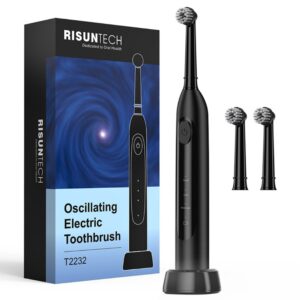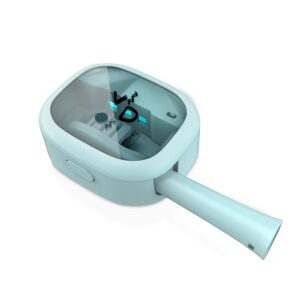Summary
Electrical Muscle Stimulation (EMS) body massagers have gained recognition as a technology that mimics natural muscle contractions through electrical impulses, offering an innovative approach to muscle toning and recovery. Originally developed for therapeutic purposes in the late 18th century, EMS has transitioned into mainstream fitness applications, appealing to those seeking efficient workout alternatives amidst busy lifestyles. The notable rise in EMS popularity is largely attributed to its ability to engage multiple muscle groups simultaneously, enhancing strength and toning with minimal time investment.
The versatility of EMS devices allows for both activation and relaxation applications, making them suitable for various settings, including fitness training, rehabilitation, and pain management. With advancements in technology, modern EMS devices offer customizable programs tailored to individual fitness goals, facilitating muscle engagement and improved recovery processes. Despite their growing acceptance, the integration of EMS into fitness regimens has sparked discussions about safety, efficacy, and potential contraindications, particularly among users with specific health conditions.
Scientific studies have demonstrated that EMS can significantly activate muscle fibers, comparable to traditional strength training, while also providing joint-friendly exercise options for diverse populations. However, challenges remain, such as the need for further research to address pilot study limitations and establish broader generalizability. As the EMS industry continues to evolve, future innovations aim to refine protocols and enhance user experiences, ensuring that this technology remains accessible and effective for muscle toning and recovery.
Table of Contents
History
Electrical Muscle Stimulation (EMS) has a rich history rooted in therapeutic applications. Initially developed in the late 18th century, EMS technology began with the discovery of the physiological effects of electrical impulses on muscle tissue. This foundational research paved the way for its use in rehabilitation and physical therapy, where it was employed to aid muscle recovery and re-engagement after injuries or surgeries.
In the following decades, advancements in technology allowed for the development of more sophisticated EMS devices. By the mid-20th century, these devices gained recognition in medical settings for their effectiveness in treating conditions like muscle atrophy and enhancing rehabilitation outcomes. Physical therapists began integrating EMS into treatment protocols, particularly for patients recovering from surgeries or experiencing muscular weakness due to immobilization.
As the understanding of muscle physiology evolved, so did the applications of EMS. By the late 20th and early 21st centuries, EMS started to transition from a purely therapeutic tool to a popular fitness solution. With the rise of fitness culture and technology, EMS was marketed as a time-efficient alternative for strength training and weight loss, appealing to busy individuals and fitness enthusiasts alike. This shift was further fueled by social media, where influencers showcased the effectiveness of EMS devices, contributing to their popularity in home fitness routines.
Today, EMS devices come in various forms, including portable units and wearable suits, catering to diverse user needs. While still widely used in rehabilitation settings, EMS has firmly established itself in the fitness industry, promoting muscle toning and recovery as a viable complement to traditional workout regimens. The ongoing research into the efficacy and safety of EMS continues to shape its applications and enhance its integration into both therapeutic and fitness practices.

Mechanism of Action
Electrical Muscle Stimulation (EMS) operates by mimicking the natural action potentials generated by the central nervous system, resulting in muscle contractions. The process begins when electrical impulses are delivered to the muscles through electrode pads or wearable suits. These impulses evoke action potentials in the intramuscular motor and sensory axons, leading to muscle contractions similar to those that occur during voluntary movement.
Types of Applications
EMS can be utilized for two primary applications: activating and relaxing. The activating application focuses on strengthening the musculature, while the relaxing application aims to promote recuperation and muscle relaxation. Both applications exploit the principle of replicating the body’s own electrical impulses, providing benefits such as improved muscle tone, enhanced circulation, and reduced muscle soreness post-exercise.
Physiological Response
During EMS sessions, the autonomic nervous system responds by activating the sympathetic nervous system, primarily through mechanisms like central command and exercise pressor reflex. This activation results in modest increases in heart rate, which can contribute to cardiovascular benefits alongside muscle stimulation. Additionally, EMS can aid in muscle engagement and improve circulation by delivering controlled electrical impulses, enhancing oxygen flow to the targeted muscles.
Device Functionality
Different EMS devices offer various preset programs tailored to specific fitness goals, such as toning, strength, recovery, or massage. The selection of the appropriate mode is crucial, as it directly affects the frequency, intensity, and duration of stimulation, which aligns with the user’s fitness objectives. This flexibility allows EMS to cater to a wide range of individuals, including those with physical limitations or those seeking to enhance their traditional training routines.

Applications
Electrical Muscle Stimulation (EMS) devices are increasingly utilized in various fields, including fitness, rehabilitation, and pain management, demonstrating versatility in enhancing muscle performance and recovery.
Rehabilitation
In the rehabilitation field, EMS is recognized for its therapeutic benefits. It is frequently used to assist in recovery from injuries and surgeries by keeping muscles active and promoting blood circulation to injured areas, which aids in healing and reduces pain. The method can prevent muscle atrophy during periods of immobilization, allowing individuals to regain strength more quickly post-injury. Additionally, EMS can lower the risk of future injuries by strengthening muscles and improving balance.
Pain Management
EMS devices are also effective for pain management, particularly in reducing chronic pain symptoms. Techniques such as Transcutaneous Electrical Nerve Stimulation (TENS) utilize electrical impulses to decrease pain intensity, both during and after treatment. Research has shown that TENS can alleviate pain without the need for medication, thereby enhancing the quality of life for individuals with long-term pain conditions. Physical therapists often incorporate EMS into treatment plans to address weakened or injured muscles, helping patients regain function more efficiently.
Fitness Training
EMS has become a popular tool among fitness enthusiasts for muscle toning and strengthening. The technology can effectively target multiple muscle groups simultaneously, providing a comprehensive workout that tones and strengthens the entire body. Many premium EMS devices offer a variety of pre-designed programs tailored for different fitness goals, including strength training, recovery, and pain relief. This adaptability allows users to cater their workouts to specific needs, maximizing the efficiency of their training sessions.
Enhanced Recovery
The recovery process is crucial in any fitness regimen, and EMS training plays a vital role in optimizing recovery techniques. Incorporating EMS into post-workout routines can significantly enhance muscle recovery, as it promotes relaxation, reduces muscle tension, and improves blood flow to the affected areas. Techniques such as stretching and foam rolling, when combined with EMS, can further boost recovery efforts by addressing muscle tightness and soreness. Hydration is also emphasized as an essential aspect of recovery after EMS sessions, aiding in muscle repair and nutrient delivery.

Benefits
Functional Electrical Stimulation (FES) and Electrical Muscle Stimulation (EMS) offer a variety of benefits that can enhance muscle performance, promote rehabilitation, and improve overall physical health.
Convenience and Accessibility
For users seeking convenience, EMS devices offer a versatile solution for fitness and rehabilitation. When choosing an EMS device, it is recommended to select one with a variety of programs catering to strength, recovery, pain relief, and relaxation needs. This flexibility allows users to address multiple objectives in their training regimen. Moreover, many modern devices are designed to be user-friendly, portable, and lightweight, making them accessible for on-the-go use.
Functional Electrical Stimulation Benefits
FES can significantly increase a person’s independence and confidence following an injury or diagnosis. It is particularly effective in reducing the risk of future injuries, such as falls, by promoting muscle function and stability. Furthermore, FES can help individuals regain movement in weakened or atrophied muscles, which is crucial for those who may be incapacitated or immobilized.
However, while FES presents numerous advantages, it also comes with some risks. Users may experience discomfort from the stimulation, which can hinder their willingness to continue treatment. It is essential to work closely with a neuromuscular rehabilitation therapist to ensure the proper type and placement of electrodes to minimize complications.
Electrical Muscle Stimulation Benefits
EMS has a broad range of benefits that are applicable in both clinical and fitness settings. One of its primary advantages is its ability to increase muscle strength and density, particularly in muscles that have weakened due to injury or prolonged inactivity. EMS effectively mimics the natural contraction of muscles, making it an excellent option for rehabilitation and strength training, even for those who cannot engage in traditional exercise.
Additionally, EMS can aid in pain relief, improve mood, and enhance muscle endurance. It has also been shown to assist in weight and fat loss by increasing metabolic rates during and after stimulation sessions. Moreover, EMS is particularly beneficial for enhancing joint mobility and promoting healing by improving blood flow and reducing inflammation in injured areas.

Risks and Considerations
The use of Electrical Muscle Stimulation (EMS) devices, including whole-body electromyostimulation (WB-EMS), necessitates a thorough understanding of the potential risks and contraindications involved. It is crucial for both practitioners and users to be aware of these factors to ensure safe and effective treatment.
Contraindications
Before initiating EMS therapy, it is essential to assess any contraindications that may impede its application. Contraindications can be categorized into absolute and relative risks. Absolute contraindications indicate that electrical stimulation should not be used under any circumstances, while relative contraindications suggest that the decision to use EMS can be made based on a careful evaluation of potential risks versus benefits.
Common absolute contraindications include conditions such as severe bleeding disorders, implanted electrical devices (e.g., pacemakers), and certain neurological disorders like epilepsy. In contrast, conditions previously classified as absolute contraindications, such as Diabetes Mellitus and tumors, have been debated and are now often considered relative contraindications, reflecting a cautious approach.
Risks of Application
Improper use of EMS devices can lead to serious side effects, particularly among high-risk individuals. These may include skin damage, burns, increased pain, seizures, and even strokes or blood clots. It is advised to immediately cease using the EMS device and consult a healthcare professional if any adverse reactions occur.
Furthermore, the manual accompanying EMS devices typically provides a comprehensive list of contraindications and precautions that must be adhered to in order to mitigate risks associated with treatment. For instance, electrical stimulation should not be applied in areas with active movement restrictions, such as around unstable fractures, or where there is broken skin or the presence of tumors.
Industry Considerations
The commercial sector of WB-EMS has also raised concerns about the potential overregulation by authorities, leading to calls for a clearer understanding and mandatory acceptance of contraindications as outlined in guidelines like DIN 33961-5. Manufacturers are encouraged to implement stringent quality control measures to combat the risks associated with counterfeit products, which can undermine consumer trust and overall safety in EMS applications.
Scientific Research
Overview of Studies on EMS
Recent systematic reviews have extensively evaluated the efficacy of Electrical Muscle Stimulation (EMS) in muscle toning and strength enhancement. A comprehensive search conducted across multiple databases, including Scopus, Google Scholar, Web of Science, and PubMed, yielded a total of 147 articles related to whole body electromyostimulation (WB-EMS) and its impact on hypertrophy, strength, and performance. Following a rigorous selection process that included the removal of duplicates and the assessment of relevance, 11 articles were ultimately included for detailed analysis in the review.
Methodology
The selection process employed in the review adhered to specific criteria focused on the types of intervention, variable measurement, and protocol utilized in the studies. The methodological framework followed the PRISMA guidelines, ensuring transparency and reproducibility in the research process. The initial search commenced on May 23, 2023, and concluded on May 26, 2023, showcasing the systematic approach taken to curate relevant literature.
Findings
The studies included in the review indicate that EMS can lead to significant muscle activation, with reports highlighting up to 98% activation of major muscle groups. This high level of engagement is particularly beneficial for targeting fast-twitch muscle fibers, which are crucial for strength development and metabolic health. Moreover, the time efficiency of EMS training was underscored, with 20-minute sessions delivering results comparable to longer conventional workouts, thus appealing to individuals with busy lifestyles.
Additionally, EMS has been identified as a joint-friendly exercise option, making it suitable for various populations, including older adults, beginners, and those recovering from injuries. The evidence suggests that EMS is most effective when integrated into a comprehensive training program that combines traditional resistance training and aerobic exercise, thereby enhancing overall muscle health and function.
Limitations and Future Research
Despite the promising findings, the primary limitation identified within the reviewed studies is their pilot nature and small sample sizes, which may affect the generalizability of the results. Future research is encouraged to involve larger and more diverse participant groups, including different genders and age ranges, to further validate the efficacy of EMS across varied demographics. This expanded research could provide deeper insights into the critical variables influencing individual responses to electrical stimuli, ultimately refining the application of EMS in muscle toning and rehabilitation strategies.
User Experience
Design and Usability
The design of EMS body massagers, such as the EvenSkyn Phoenix device, prioritizes user experience, making them accessible even for individuals unfamiliar with electrical muscle stimulation (EMS) technology. These devices are often equipped with smartphone applications that provide step-by-step instructions for setup and operation, guiding users through various workout programs. This approach allows for customization of intensity levels according to personal comfort and fitness levels, ensuring that both beginners and experienced users can effectively utilize the technology.
Wireless and Rechargeable Features
Many modern EMS devices, including those from Visionbody, feature a wireless and rechargeable control box, offering users full freedom of movement during workouts without the risk of tripping hazards caused by cables. This mobility enhances the overall training experience, making it more convenient and adaptable to different environments, whether at home or on the go.
Control and Customization
The Visionbody app serves as a central control hub for its EMS systems, allowing users to manage pulse areas, monitor heart activity, and access specialized training programs tailored to specific fitness goals. Additionally, the ability to control each electrode individually enables users to address muscular imbalances or undertrained areas effectively. Such customization fosters a more personalized training regimen, enhancing user satisfaction and outcomes.
Accessibility and User-Friendly Interfaces
A significant consideration for EMS devices is their accessibility. Many products emphasize user-friendly interfaces and include training manuals to facilitate ease of use. This ensures that users can maximize the benefits of the technology without encountering confusion or frustration. Furthermore, portable and lightweight designs contribute to the ease of storage and transport, catering to the needs of individuals who wish to incorporate EMS training into their busy lifestyles.
Importance of Familiarization
To ensure optimal performance and prevent any issues, it is recommended that users thoroughly read the user manual before beginning their sessions. Understanding the specific settings and features of the device is crucial for effective use and to avoid potential skin irritation or ineffective training. Personal trainers often emphasize the importance of familiarizing oneself with device controls to enhance the overall experience and training effectiveness.
Future Directions
The field of Electrical Muscle Stimulation (EMS) is poised for significant advancements as research continues to evolve and adapt to the changing needs of users. There are several promising directions for future exploration and development within the EMS technology landscape.
Advances in Protocol Optimization
One of the primary areas for future research is the optimization of EMS protocols. While EMS has demonstrated efficacy in strength enhancement and performance gains, optimal results are contingent upon appropriate usage of the technology, including settings, timing, and frequency of applications. Future studies should focus on refining these parameters to maximize the benefits of EMS, especially in conjunction with conventional training methods. This ongoing development will likely enhance the integration of EMS into various fitness regimens, appealing to a broader audience, including athletes and casual users alike.
Technological Innovations
Technological advancements will play a crucial role in the future of EMS devices. Innovations in microcurrent technology and device portability are already shaping the market, with opportunities for further enhancement through longer battery life, wireless charging, and improved user interfaces. Future EMS devices could also integrate smart features, such as mobile app connectivity, which can offer personalized training programs and real-time feedback to users. These enhancements aim to make EMS more accessible and user-friendly, catering to both fitness enthusiasts and individuals with physical limitations.
Expanding Applications
The application of EMS is not limited to muscle toning; it also encompasses therapeutic and rehabilitative uses. Future research may explore the potential of EMS in new therapeutic areas, including injury recovery and pain management. Additionally, understanding the varying settings required for different applications—such as muscle strengthening versus relaxation—could lead to more tailored and effective EMS treatments for individuals.
Regular Updates to Contraindication Lists
As EMS usage becomes more prevalent, it is essential to maintain a regularly updated list of contraindications to ensure user safety and efficacy of the technology. Countries with less restrictive regulations for non-medical EMS applications should critically evaluate existing guidelines and consider implementing updates based on the latest research findings. This will help mitigate risks and enhance the overall effectiveness of EMS training.







